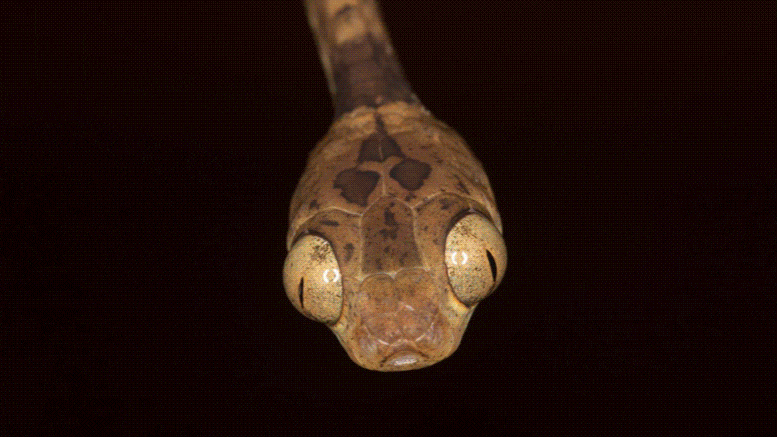
Credit: John David Curlis, University of Michigan Museum of Zoology.
“We found a major burst of snake dietary diversification after the dinosaur extinction—species were evolving quickly and rapidly acquiring the ability to eat new types of prey,” said study lead author Michael Grundler, who did the work for his doctoral dissertation at U-M and who is now a postdoctoral researcher at UCLA.Credit: Ivan Prates, University of Michigan Museum of Zoology.
Similar outbursts of dietary diversification were also seen when snakes arrived in new places, as when they colonized the New World.Snake specimen from U-M’s Museum of Zoology?
Credit: Jenna Crowe-Riddell / Randy Singer, University of Michigan Museum of Zoology.
Snake specimen from U-M’s Museum of Zoology.
Credit: Ramon Nagesan, University of Michigan Museum of Zoology.
The dataset includes more than 34,000 direct observations of snake diets, from published accounts of scientists’ encounters with snakes in the field and from the analysis of the stomach contents of preserved museum specimens.Credit: Dan Rabosky, University of Michigan Museum of Zoolog.
Grundler and Rabosky merged their dietary dataset with previously published snake phylogenetic data in a new mathematical model that allowed them to infer what long-extinct snake species were like.Credit: Ivan Prates, University of Michigan Museum of Zoology.
“You might think it would be impossible to know things about species that lived long ago and for which we have no fossil information,” said Rabosky, an associate professor in the U-M Department of Ecology and Evolutionary Biology and an associate curator at the Museum of Zoology.Credit: Dan Rabosky, University of Michigan Museum of Zoology.
In addition to showing a major burst of snake dietary diversification following the demise of the dinosaurs in what’s known as the K-Pg mass extinction, the new study revealed similar explosive dietary shifts when groups of snakes colonized new locations.The American pipe snake (Anilius scytale) is harmless but is frequently mistaken for dangerously venomous coral snakes.Credit: Dan Rabosky, University of Michigan Museum of Zoology.
Many of them imitate deadly coral snakes to ward off predators and are known locally as false coral snakes.
The American pipe snake (Anilius scytale) is harmless but is frequently mistaken for dangerously venomous coral snakes.Credit: Dan Rabosky, University of Michigan Museum of Zoology.
“Some people think that zoology collections are just warehouses for dead animals, but that stereotype is completely inaccurate,” Rabosky said